- Russia to stop using orbiting laboratory in 2020, deputy prime minister says
- U.S. depends on Russian spacecraft to get to the station with end of shuttle program
- NASA says it has not received notification, notes long-standing cooperation
(CNN) -- Russia said it does not plan to use the International Space Station beyond 2020, casting a shadow on U.S. plans to continue cooperation with the country and extend the life of the orbiting laboratory until at least 2024.
Russian Deputy Prime Minister Dmitry Rogozin told reporters Tuesday that Russia is looking to redirect its attention to other projects after 2020. His comments come as tensions mount over U.S. sanctions on Russia for its role in the crisis in Ukraine.
NASA released a statement saying that the U.S. space agency "has not received any official notification from the Government of Russia on any changes in our space cooperation at this point."
NASA added that cooperation in space has been a hallmark of U.S.-Russian relations, even during the Cold War, and it pointed to the past 13 years of continuous human presence on the orbiting outpost.

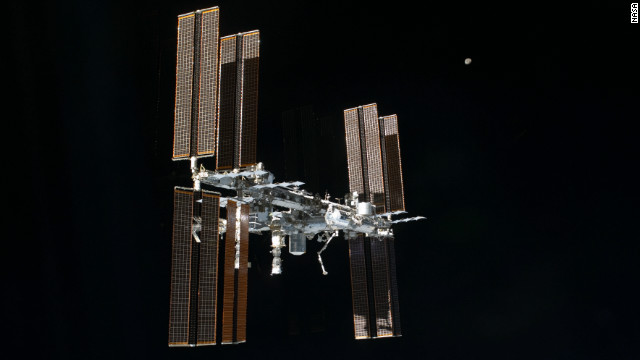 The crew of the space shuttle Atlantis took this picture of the International Space Station after leaving it in July 2011. Atlantis was the last shuttle to visit the station, which was first launched in 1998 and built by a partnership of 16 nations.
The crew of the space shuttle Atlantis took this picture of the International Space Station after leaving it in July 2011. Atlantis was the last shuttle to visit the station, which was first launched in 1998 and built by a partnership of 16 nations. 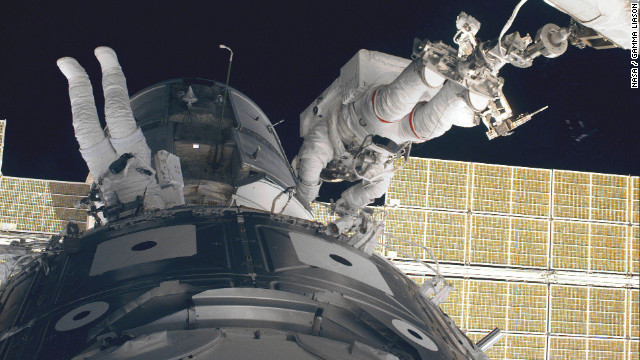 The crew of the space shuttle Endeavour initiates the station's first assembly sequence in 1998. The International Space Station includes several large modules, each launched separately and connected in space by astronauts.
The crew of the space shuttle Endeavour initiates the station's first assembly sequence in 1998. The International Space Station includes several large modules, each launched separately and connected in space by astronauts. 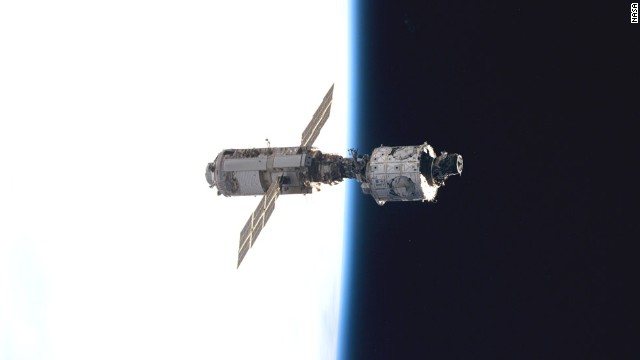 The Zarya control module, on the left with the solar panels, floats above Earth with its newly attached Unity module after the first assembly sequence in December 1998.
The Zarya control module, on the left with the solar panels, floats above Earth with its newly attached Unity module after the first assembly sequence in December 1998.  The first crew of the International Space Station, seen on board in December 2000. From the left are cosmonaut Yuri P. Gidzenko, astronaut William M. Shepherd and cosmonaut Sergei K. Krikalev.
The first crew of the International Space Station, seen on board in December 2000. From the left are cosmonaut Yuri P. Gidzenko, astronaut William M. Shepherd and cosmonaut Sergei K. Krikalev.  The Endeavour crew installs the first set of U.S. solar arrays on the station in 2000.
The Endeavour crew installs the first set of U.S. solar arrays on the station in 2000. 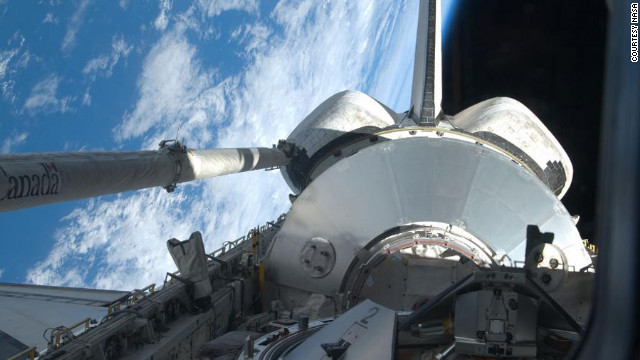 In March 2001, a space shuttle delivered the station's second crew and brought the first one home. It also brought Leonardo, the station's first Multi-Purpose Logistics Module, to the station. Leonardo carried supplies and equipment.
In March 2001, a space shuttle delivered the station's second crew and brought the first one home. It also brought Leonardo, the station's first Multi-Purpose Logistics Module, to the station. Leonardo carried supplies and equipment. 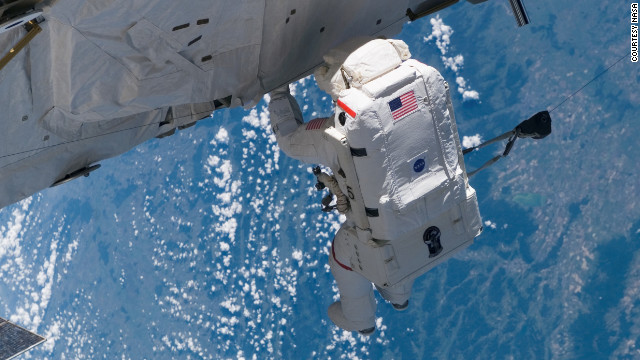 In September 2006, the space shuttle Atlantis docked with the space station, delivering solar wings and a new truss.
In September 2006, the space shuttle Atlantis docked with the space station, delivering solar wings and a new truss. 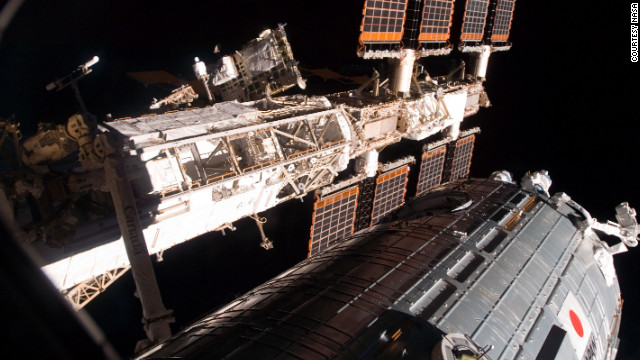 The space shuttle Discovery leaves the space station in March 2008 after its crew successfully delivered and installed the Japanese-built Kibo lab.
The space shuttle Discovery leaves the space station in March 2008 after its crew successfully delivered and installed the Japanese-built Kibo lab. 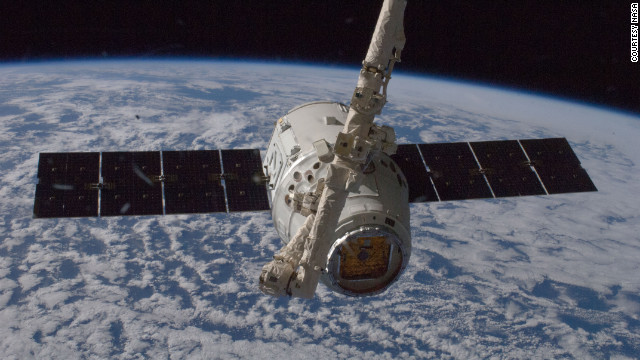 The unmanned SpaceX Dragon spacecraft connects to the space station in May 2012. It was the first private spacecraft to successfully reach an orbiting space station.
The unmanned SpaceX Dragon spacecraft connects to the space station in May 2012. It was the first private spacecraft to successfully reach an orbiting space station. 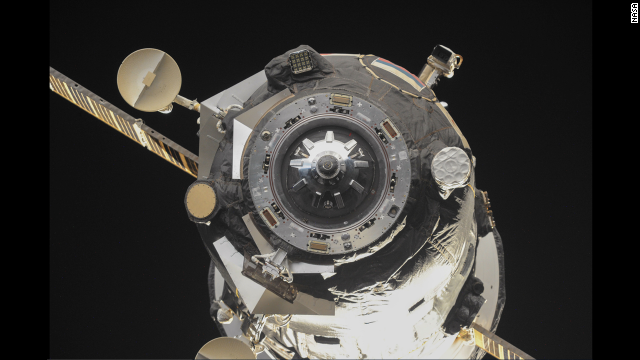 An unmanned Russian cargo craft disconnects from the space station in April 2013. The station relies heavily on ships to bring up supplies.
An unmanned Russian cargo craft disconnects from the space station in April 2013. The station relies heavily on ships to bring up supplies. 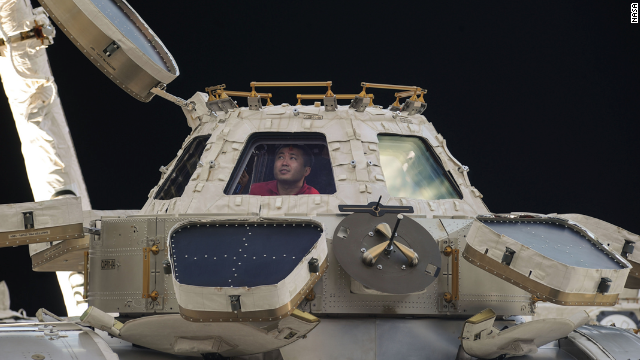 Commander Koichi Wakata of the Japan Aerospace Exploration Agency peers out of the space station's Cupola observatory on April 27. The Cupola is a dome-shaped module that allows station crew members to observe and guide activities outside the station.
Commander Koichi Wakata of the Japan Aerospace Exploration Agency peers out of the space station's Cupola observatory on April 27. The Cupola is a dome-shaped module that allows station crew members to observe and guide activities outside the station. 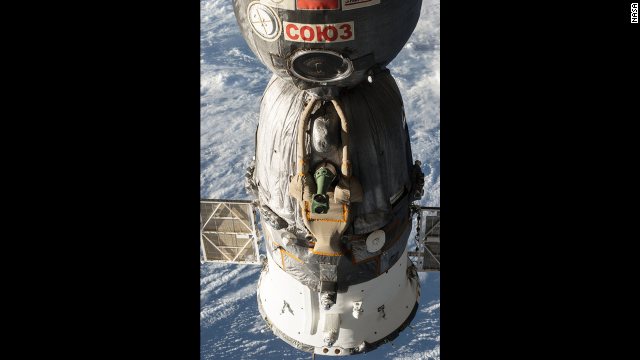 A Russian Soyuz spacecraft is docked with the space station on May 5. Since the U.S. shuttle program ended in 2011, all crew members are ferried to and from the space station on Russian rockets.
A Russian Soyuz spacecraft is docked with the space station on May 5. Since the U.S. shuttle program ended in 2011, all crew members are ferried to and from the space station on Russian rockets. 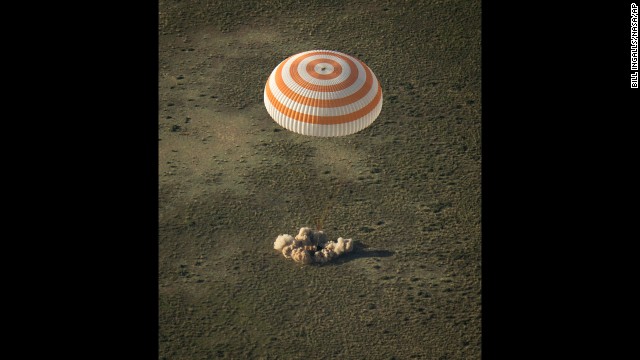 A Soyuz spacecraft is seen on May 13 as it lands in Kazakhstan with Wakata and other members of the his Expedition 39 crew.
A Soyuz spacecraft is seen on May 13 as it lands in Kazakhstan with Wakata and other members of the his Expedition 39 crew. International Space Station
International Space Station
International Space Station
International Space Station
International Space Station
International Space Station
International Space Station
International Space Station
International Space Station
International Space Station
International Space Station
International Space Station
International Space Station
 Photos: International Space Station
Photos: International Space Station  See U.S., Russia crew lift off into space
See U.S., Russia crew lift off into space U.S. State Department spokeswoman Jen Psaki echoed that the United States and Russia have a long history of cooperation in space and that the United States hopes it will continue.
At present, the U.S. space program relies on the Russian program. Ever since NASA retired its aging shuttle fleet in 2011, the only way for astronauts to reach the space station is aboard a Russian Soyuz craft.
Private industry has filled a gap by ferrying cargo in low-Earth orbit, and NASA has awarded cargo resupply contracts to the California-based SpaceX and the Virginia-based Orbital Sciences Corporation.
SpaceX did not immediately respond to a request for comment about Rogozin's statements. Orbital spokesman Barron Beneski told CNN that the company did not have an immediate reaction to the Russian reports, and he noted that the company's contract calls for the delivery of cargo to the speace station through 2016.
The United States, Russia, Europe, Japan, and Canada are the principal countries involved in the operation of the International Space Station.
The history of human spaceflight
NASA to end most activities with Russia
CNN's Mike Ahlers, Greg Seaby and Samson Desta contributed to this report.
No comments:
Post a Comment